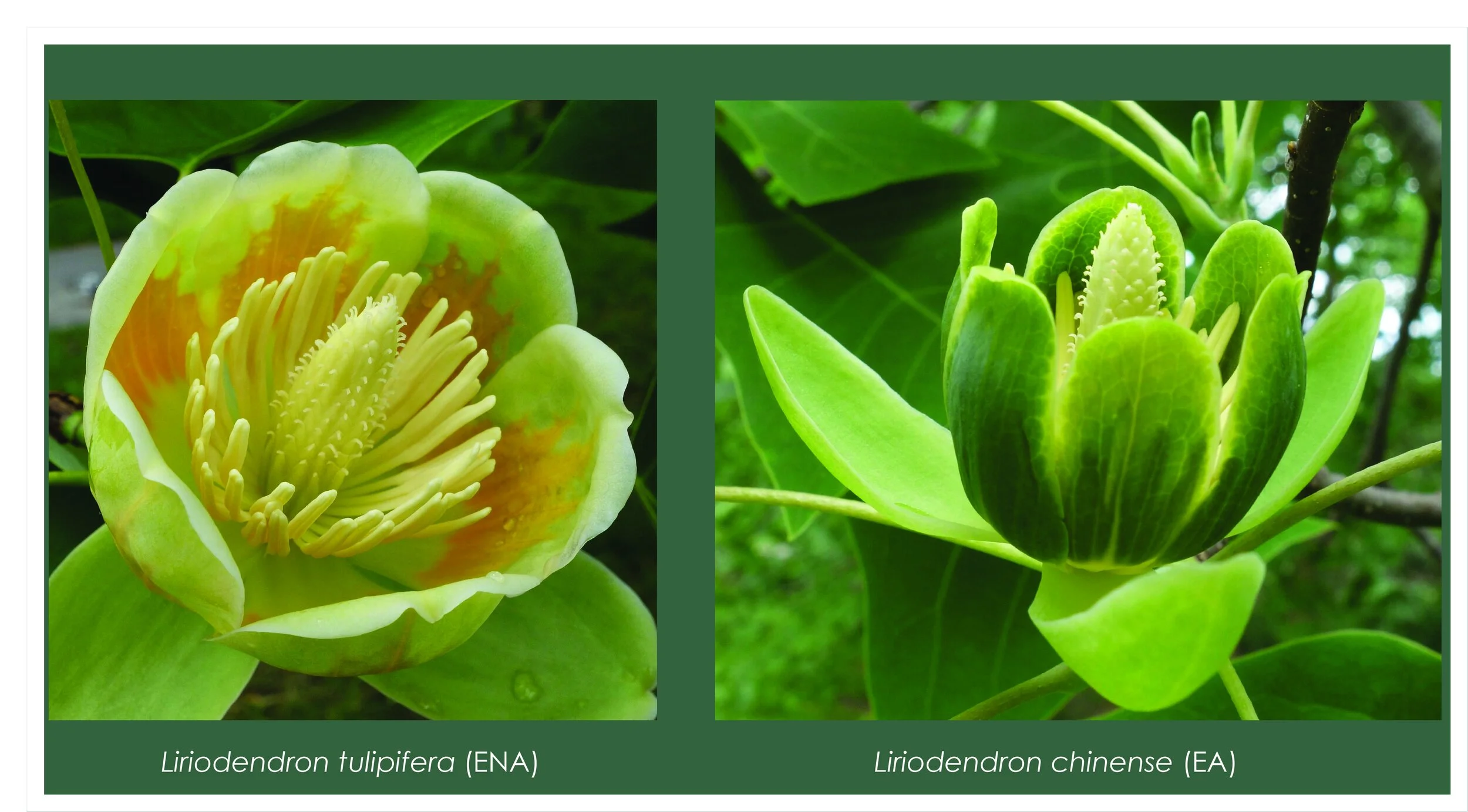Plants Move (A Lot More than You May Think)
Presentation By Ned Friedman
December 21, 2022
Present: Collins and daughter Nora, Dry, Friedman and wife Pam Diggle, Hume and husband John Shattuck, Kelly and wife Peggy Badenhausen, Kondoleon, Kuttner and wife Joan Fitzgerald, Landers and son Nelson Barrette and husband Tom Barrette, Nayak and daughter, Vanderwarker, Vecchione, Weinberg and wife Amy, Linn, Weisgall and husband Throop Wilder
People think of trees as being rooted, Ned Friedman began, but roots don’t imply immobility. Species can meander. Close relatives sometimes move to different continents. For instance: there are only two species of tulip trees: one grows in eastern North America and the other grows in Asia, in eastern China. The trees are closely related; they are basically cousins. How did this happen? How did two such similar species end up so far apart? How did they diverge, geographically and morphologically?
In 1840, Asa Gray, an eminent American botanist who was a professor of Natural History at Harvard, first noticed and recorded the many striking similarities between plants in eastern North America and in Asia. This was at a time when Japan was opening up to the West, culturally and economically. Gray had a wide circle of colleagues and friends with whom he shared botanical specimens. He was regarded as one of the great natural scientists of his time and engaged in major projects, including compiling the classic manual of plants in the northern United States.
His ”disjunction theory”—that similar plants came from a common ancestor and did not spring up independently of each other—was a step towards evolution. In 1856, Gray noted that he had received a letter from one of his pen pals, an “esteemed colleague.” That colleague was Charles Darwin, who was asking Gray to do him a favor: compile a list of seed plant species common to the United States and Europe. “I could never do this work,” Darwin wrote to Gray, “but you can.” Gray, however, intrigued by the similarities between United States flora and species in eastern Asia and Japan, offered to make that list of those plants instead. Darwin wrote back: please, go ahead.
Lists were evidence, clues to more questions. The big one, of course, was: How does change occur in living organisms? When Darwin wrote to Gray, he was hard at work organizing the ideas that would ultimately result in his seminal publication On the Origin of the Species—not only collecting data and formulating his dangerous ideas of evolution, but preparing a fertile intellectual ground and cultivating allies among natural scientists—for his theory. And Gray knew what Darwin was doing. “I may collect and arrange the principal data for the uses of those better qualified to discuss them and to indicate their bearing upon the origin of the existing species of plants,” he wrote.
“People will despise me for my ideas,” Darwin wrote to Gray, in July 1857, about “facts bearing on the question of the origin of the species. Either species have been independently created, or they have descended from other species.” Six weeks later Darwin sent an abstract of his theory on “how nature makes her species.” He wrote, “Why I think that species have really changed depends on general facts in the affinities, embryology, rudimentary organs, geological history, and geographical distribution of organic beings.”
And Darwin presented Gray with another hypothesis that explained the congruities between the plants of eastern North America and Asia: a land bridge. Darwin had been thinking about changes in climate and its effects on migration. His conjecture: warmer temperatures across similar latitudes lead to migration. Darwin may have been a century too early for tectonic plates, but he certainly understood that sea levels could change drastically over time.
Gray, Friedman said, got it. He got it completely. And Gray, in another letter, reiterates that his observations of American and Asian flora prove Darwin’s theory. Gray wants his evidence to be counted, too, Friedman said, his piece of the puzzle validated. And a century later, looking at DNA and mutation rates, we can determine when these various disjunctions happened over the last 40 plus million years, when land connections such as the Bering land bridge between North America and Asia stood well above sea level and provided a perfect path for plants to migrate between these two (and now physically separated) continents.
Gray became Darwin’s most important advocate in the United States. He reviewed On the Origin of the Species in many newspapers and journals (including The Atlantic Monthly when it was across the Common on Arlington Street). This Examiner left the meeting thinking that Friedman was telling two stories of evolution: a scientific one, solving the mystery of the travelling flora; and a human one, how Gray helped Darwin, compiling evidence for him, encouraging him, understanding that disjunction was a part of the puzzle, but not the whole thing. Darwin changed the world, and he knew that he could not do it alone.

